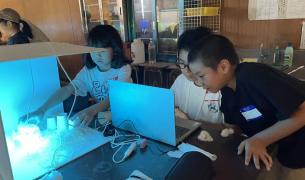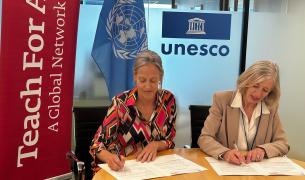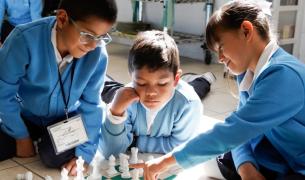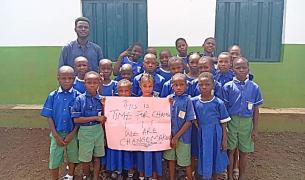Our Priorities During this Unprecedented Time
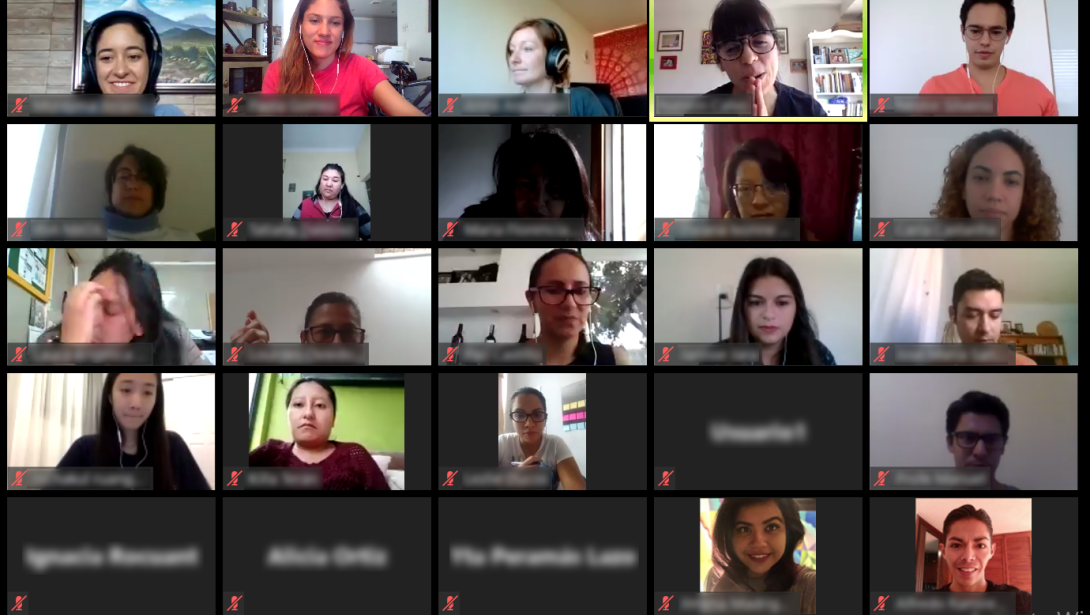
I wanted to reach out again, now that we’re several weeks into this global pandemic that is causing such devastating loss all over the world, to share a bit more specifically about our priorities at Teach For All.
While the health and economic consequences weigh on all of us, given our mission we’re particularly focused on the many ways this crisis disadvantages the rising generation of children and young people, particularly those growing up in the most marginalized communities who are least likely to be in safe spaces and have access to food, clean water, and the materials and technology that can enable ongoing learning. In the face of these massive challenges, I’ve been so inspired by our network partners – by the ways they’re supporting team members and teachers and alumni through this pandemic, by the ways their teachers and alumni are in turn stepping up and leading to support their own students and also have a systemic impact to help kids keep learning, and by the sense of possibility they’re holding as they navigate the strategic challenges ahead.
Energized by so many across our network, at the global level we’ve come together around two main priorities:
1. Keep kids safe and learning
As I’ve shared in previous letters here and here, our network partners are supporting their teachers and alumni to reach their own students, ensure their basic needs are met, and engage them in learning. They’re also having an impact beyond their own students, through training other teachers in distance learning strategies, developing educational programming for radio and TV stations, and creating educational materials to support remote learning.
Globally, we’re working to support these efforts in a few ways. First, we’re helping teachers and alumni across the network learn from each other across borders. As one example, more than 1500 teachers around the world have joined WhatsApp groups in different languages to share strategies for reaching students who don’t have internet access or computers, with the aim of sharing stories, strategies, and resources to keep kids learning in remote or unconnected places across the world. A group called the Teaching Without Internet Alliance has emerged from these discussions, which has published these recommendations, distilled from what they are finding has worked.
Second, we’re identifying and amplifying examples of teacher resilience, innovation, and entrepreneurship through our network communications and social media channels, in order to help teachers learn from each others’ successes. We’ll soon launch a public advocacy effort in partnership with UNICEF to amplify these examples well beyond our network.
Finally, we’re working to develop a multi-stakeholder partnership that will marshal global multilateral and private sector resources to fund network partners to keep learning going while schools are closed and re-start schools better once they open again. This partnership will enable network partners to broaden their impact on this generation of children, even in spite of critical local funding challenges they face because of the health and economic consequences of this pandemic. We aim to share more about this partnership by early May.
2. Find the new possibilities to accelerate our work
A few years ago, our network partners and global organization came together around a 25-year vision—that by 2040, communities in every part of the world are enabling all their children to have the education, support and opportunity to shape a better future for themselves and all of us.
As the world has changed over the last weeks, we’ve spent time in spaces across our network to consider the possibilities for accelerating our impact towards the future we envision. Throughout these discussions, we’ve rooted ourselves in the recognition that this pandemic is only revealing and exacerbating the extreme inequities that our network seeks to address, and that accelerating progress towards our vision of an equitable world where all children can fulfill their potential is more important than ever. Even as we’ve uncovered new challenges, we’ve seen new possibilities at each turn, among them three that I’ll highlight here.
Developing more extraordinary leaders
The importance of innovative, entrepreneurial, committed teachers and leaders has never been clearer to our government partners, and there are new opportunities to deepen these partnerships to grow the numbers of teachers and accelerate the impact of alumni. At the same time, network partners all over the world are seeing significant jumps in applications—from promising leaders who are searching for a way to make a meaningful difference during this time and are more uncertain than ever about their future.
Making the most of these opportunities requires recruiting, selecting, and training candidates virtually and navigating financial uncertainty, and our global organization is coming behind our network partners to help them learn from each other in these pursuits. Our global team has brought together network partners to learn from those partners with previous expertise recruiting and selecting candidates virtually, and to share new innovations that are happening all over the network. We’ve captured and shared the insights and tools that have emerged from these forums and we are working individually with partners in low bandwidth contexts to help problem-solve around the specific challenges they face. As network partners design and deliver virtual training institutes, we’re facilitating cross-border learning and collaboration and providing global resources they can leverage in this pursuit. Meanwhile, we’re convening network CEOs to think with each other and with global team members about how best to progress strategically in order to find the financial path that will make the most of the possibilities right now.
Developing students as leaders
Never has it been so clear to so many that we must work towards a holistic set of student outcomes that will enable students to develop as leaders who can navigate uncertainty and shape a better future. This crisis is showing us that the kind of education today’s kids need is one that prepares them to adapt quickly, be resilient, and develop an intrinsic motivation to learn and develop. As network partners rethink their approaches to training and supporting teachers, and partner with governments in new ways, we’re looking for the opportunities to leverage our network’s growing understanding of the student outcomes we need to work towards and how to train and develop teachers differently in order to achieve those outcomes.
Building a deeply interconnected global community to accelerate learning
There is more appetite among educators than ever to connect virtually across borders to share solutions, given the pressing nature of the challenges they face and how common they are across the world. We were already working to foster a deeply interconnected community among the teachers and alumni of our network, which is what enabled their rapid sharing of innovations during this crisis. The bonds that are being strengthened at the moment and the new virtual communities that are forming will only accelerate this work over the years to come.
We know this crisis is far from over and we are staying open to how things will continue to evolve. As we progress, we are gaining energy from doing all we can to help mitigate some of the most pressing needs created by this pandemic on the rising generation of young people—even as we make the space to center ourselves in the world we’re working to create and what unique opportunities this unprecedented situation creates to speed up progress towards that future.
I’m so grateful for all of you and the ways you’re each contributing to our global community at such a pivotal time.
